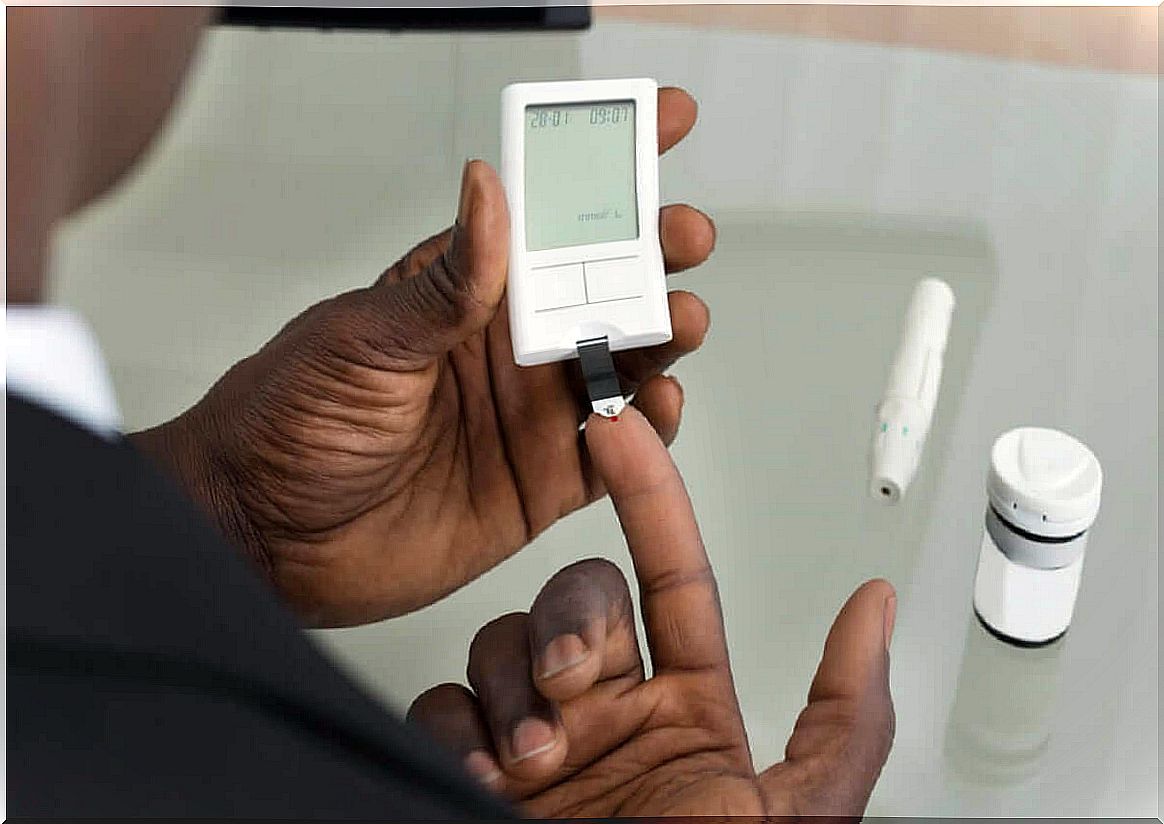Increased Risk Of Bone Fractures Due To Diabetes
Diabetics have an increased risk of bone fractures. In today’s article you will find out which bones are particularly at risk and which preventive measures are important.

Diabetes can have a variety of complications, including broken bones . This metabolic disease affects not only the composition of the blood, but can also give rise to other pathologies.
Various causes lead to an increased blood sugar level, which among other things has a negative effect on the bone tissue. However, various preventive measures can prevent broken bones. Find out more about it today.
Diabetes and metabolism
As is well known, diabetes is a metabolic disease. The main symptom is an increased blood sugar level, which is particularly pronounced on an empty stomach. However, this disease also affects other body processes.
Cardiovascular and kidney problems are common complications. In addition, the risk of bone fractures is significantly increased. This is because bone health depends, among other things, on the calcium concentration and the capacity of the bone cells, which are responsible for the formation of bone tissue.

Causes of broken bones in diabetes
Both women and men with diabetes are at higher risk of suffering from broken bones. Hormonal changes, inflammation, and various drugs can cause it. There are also other triggers:
Neuropathy
An elevated blood sugar level over a long period of time can damage the fat coating on the neurons. The nerves, especially in the legs, are then less effective at transmitting signals. As a result, diabetic neuropathy impairs the sense of balance and falls more frequently.
Dysautonomy
This term refers to diseases that affect the autonomic nervous system, which regulates and controls automatic functions that do not require a direct and conscious command.
With diabetic dysautonomia, patients have difficulty maintaining blood pressure while standing. This can lead to unconsciousness and dizziness. This in turn leads to fractures in many cases.
osteoporosis
Diabetics are more likely to suffer from osteoporosis than people who do not have this metabolic disorder. Because insulin is an anabolic hormone, it stimulates tissue formation. However, when there is a lack of insulin, bone repair is slower.
Retinopathy
Retinopathy (disease of the retina of the eye) is also a common consequence of diabetes. This disease damages the small blood vessels in the retina, which affects vision. People who cannot see well have a higher risk of falling and, as a result, a broken bone.
Which bone fractures are particularly common in diabetics?
The frequency of bone fractures emerges from various studies on diabetics. These studies also provide information about the parts of the body that are particularly frequently affected.
The different types of diabetes have different effects, which must also be taken into account. In type 1 diabetes, there is not enough insulin available, so those affected have to inject insulin. Osteoporosis and visual problems are particularly common in this type of diabetes.
Hypoglycaemia also plays a key role here, as patients often do not take in the correct dose of insulin during the day. If the sugar level drops, dizziness may occur and in this case the chance of a fall is higher.
Type 1 diabetes often results in hip and spine fractures. This is particularly pronounced when there is cardiovascular or renal comorbidity.
On the other hand, type 2 diabetes often results in fractures of the forearm or hip. In most patients, the bone density is not much different than in the rest of the population, but researchers assume that the sugar affects the bone mechanics.

Preventive measures against broken bones
Statistics suggest that diabetics are more likely to break bones, but everyone can take preventive measures to prevent them. Not only is blood sugar control important, other steps are also recommended.
For example, regular medical checks are very important. The medication prescribed by the doctor must be taken regularly and constantly to avoid complications.
In addition, physical activity is also fundamental. The risk of bone fractures is particularly high in diabetics with a sedentary lifestyle and less muscle mass. For this reason, exercise is very important to build muscles and strengthen bone tissue.
Another preventive measure is vitamin D, which is synthesized by the body when exposed to sunlight. You should therefore take a short, responsible sunbath every day. If necessary, vitamin D can also be taken as a dietary supplement. The doctor prescribes this vitamin when the levels are low or when there is no way to go in the sun (for example in northern countries in winter).
Furthermore, green leafy vegetables are important to supply the body with vitamins and calcium. This mineral is also known to be abundant in dairy products. If you include these foods in your diet regularly, they will take care of your bones, which will reduce the chance of breakage.
Densitometry to determine bone health
Diabetics should have densitometry performed in addition to other preventive measures. With this technique, the doctor measures the density of the bones in order to assess the risk of bone fractures.
Diabetics have to take special care of their health and can do a lot for it themselves. Also, if you follow your doctor’s advice and get regular checkups, you can reduce the risk of bone damage.









